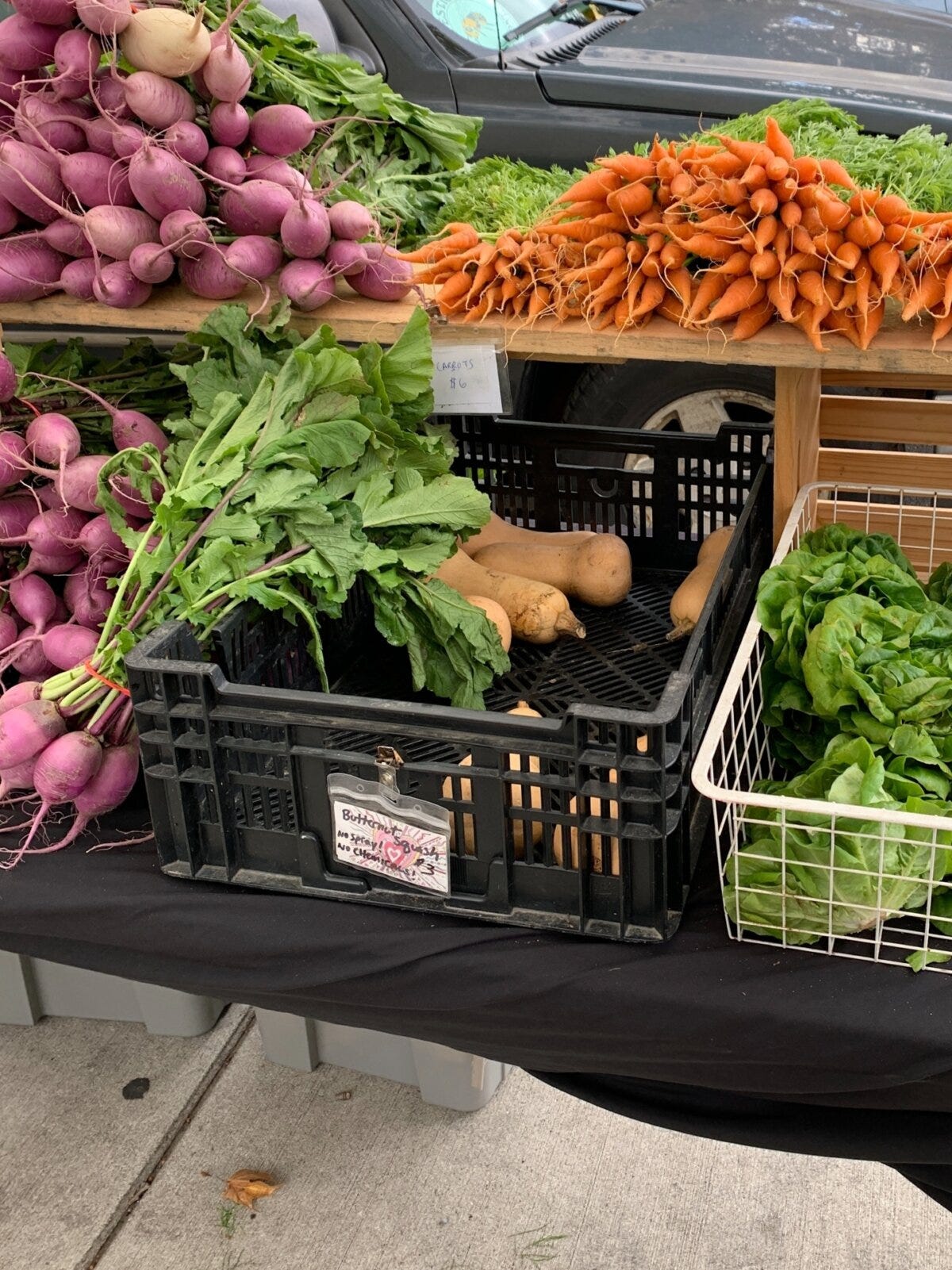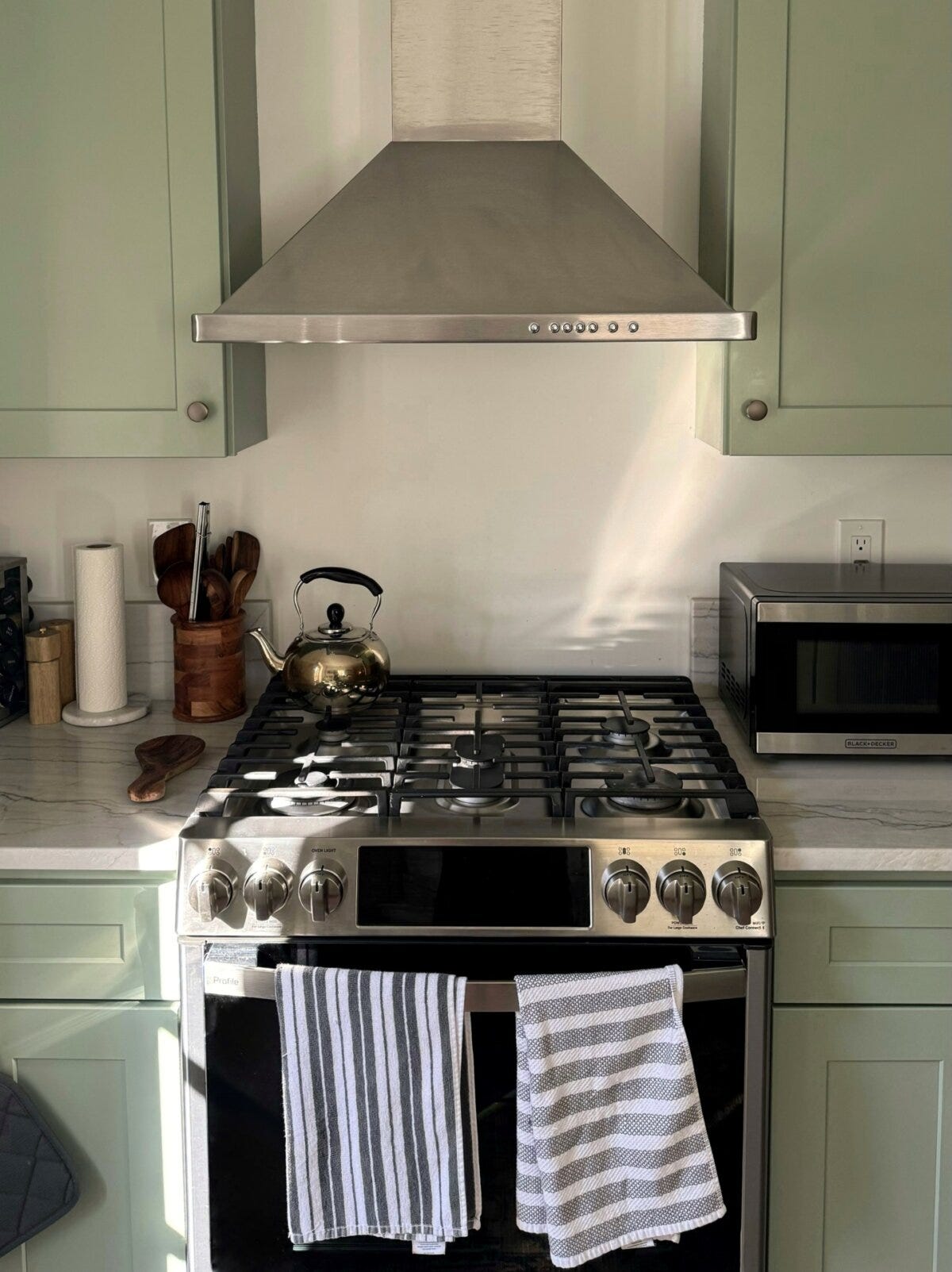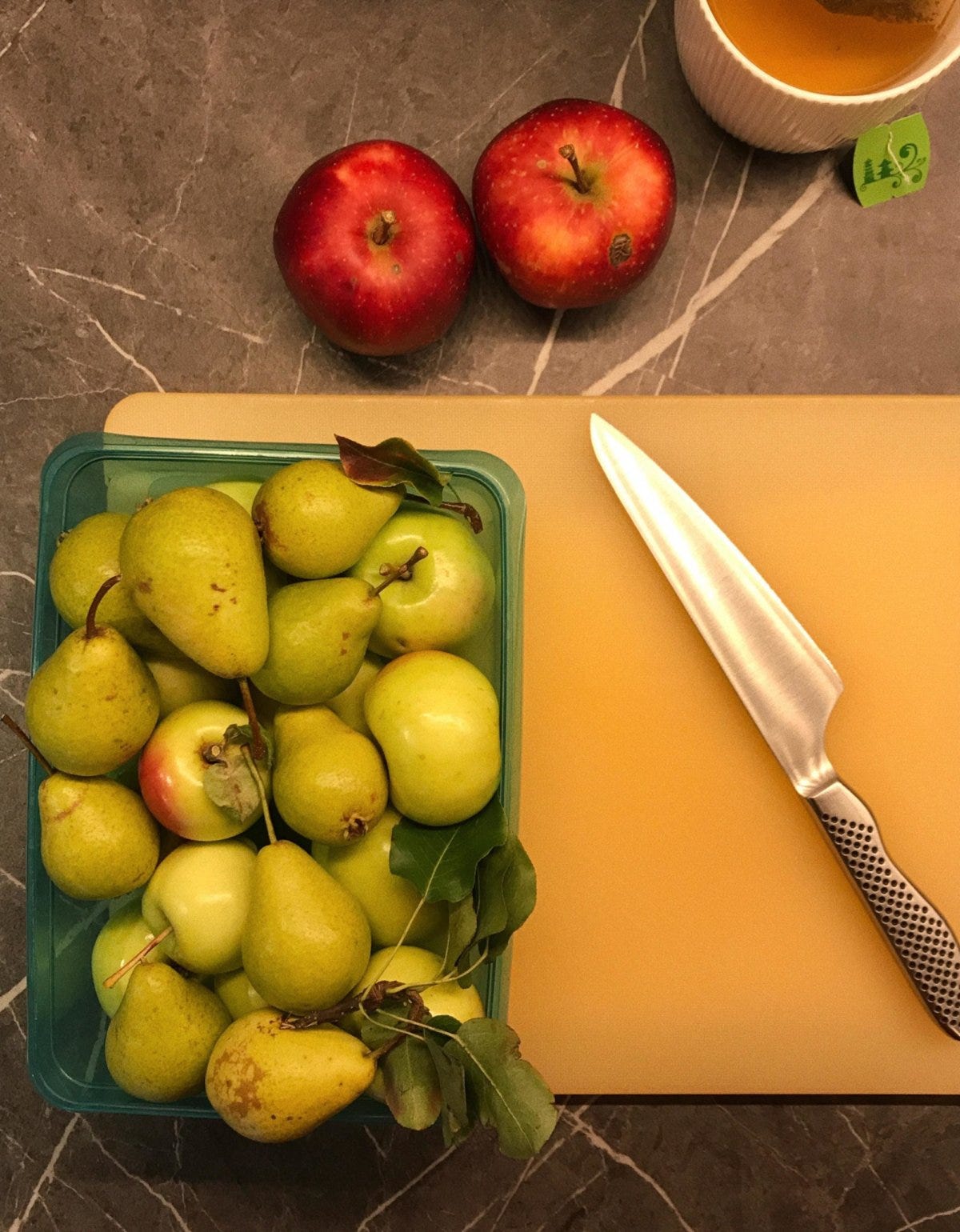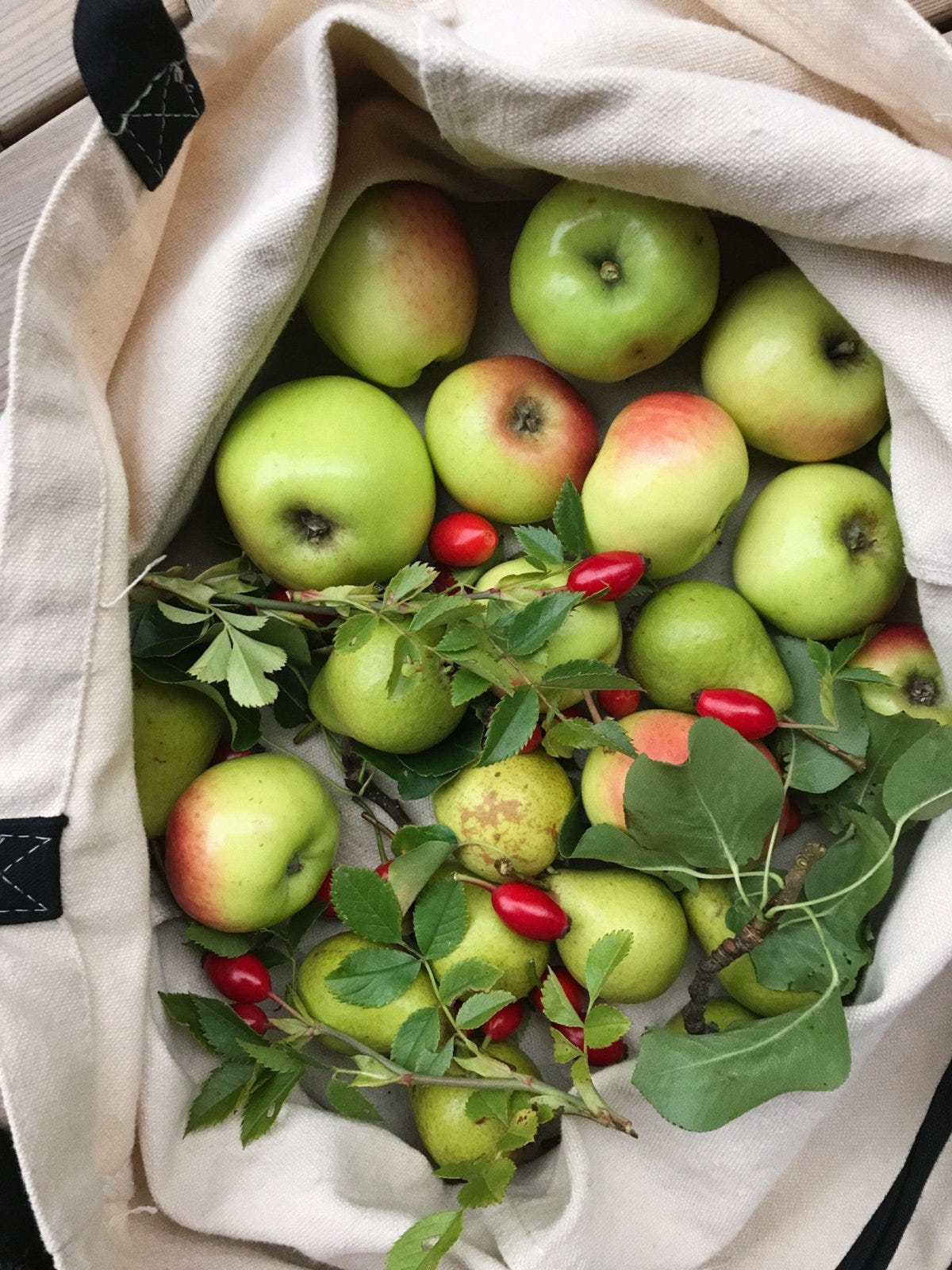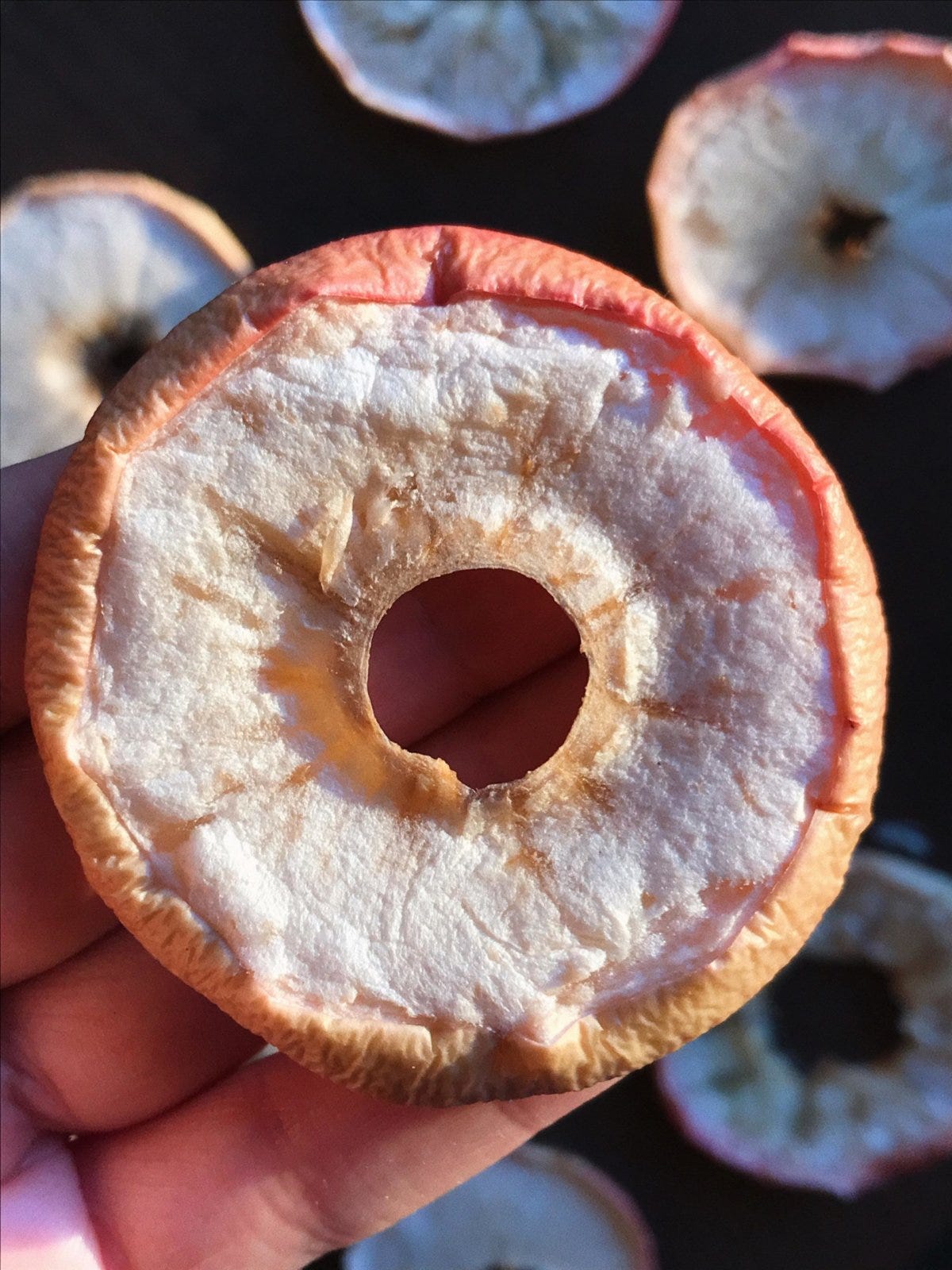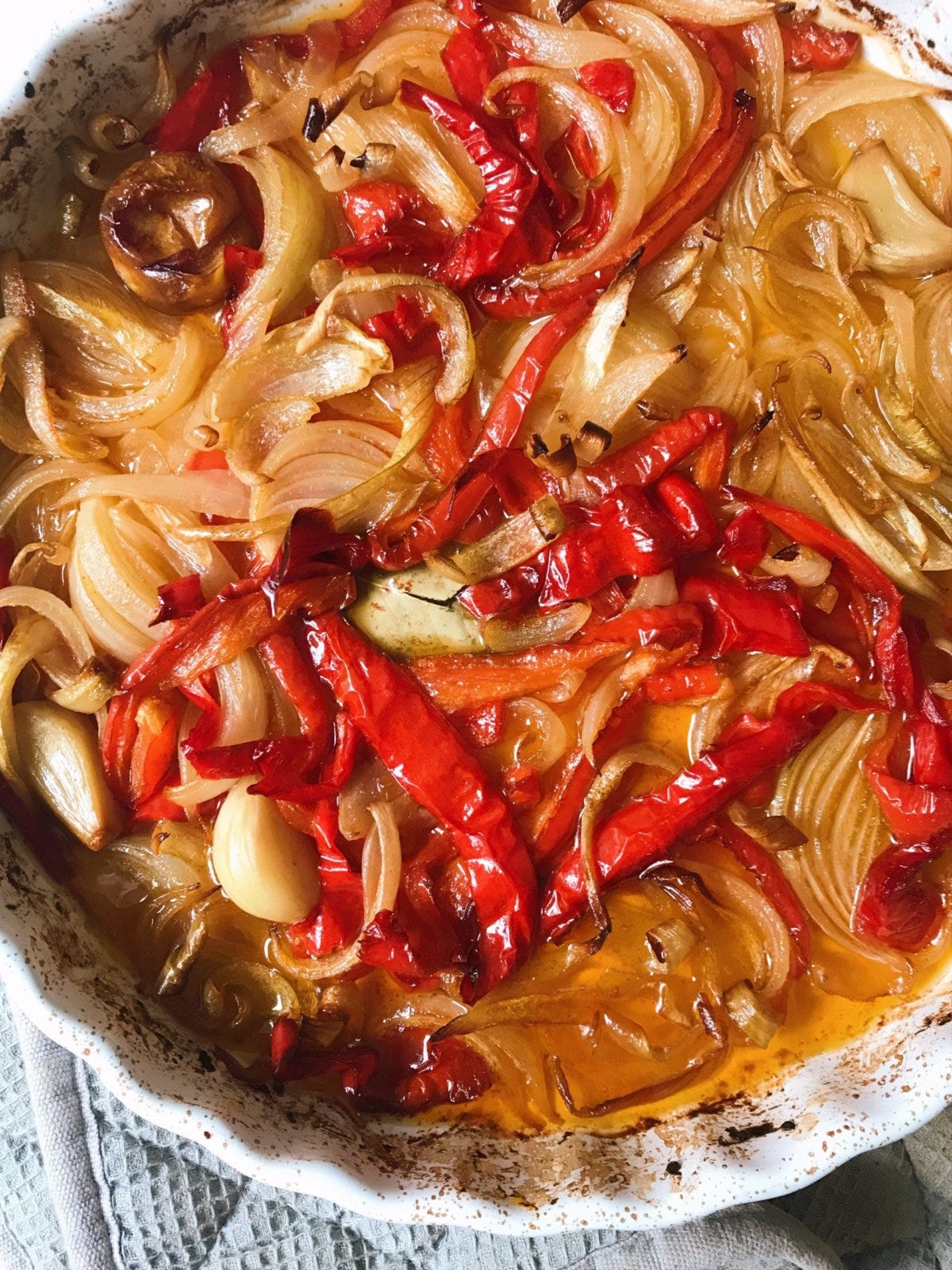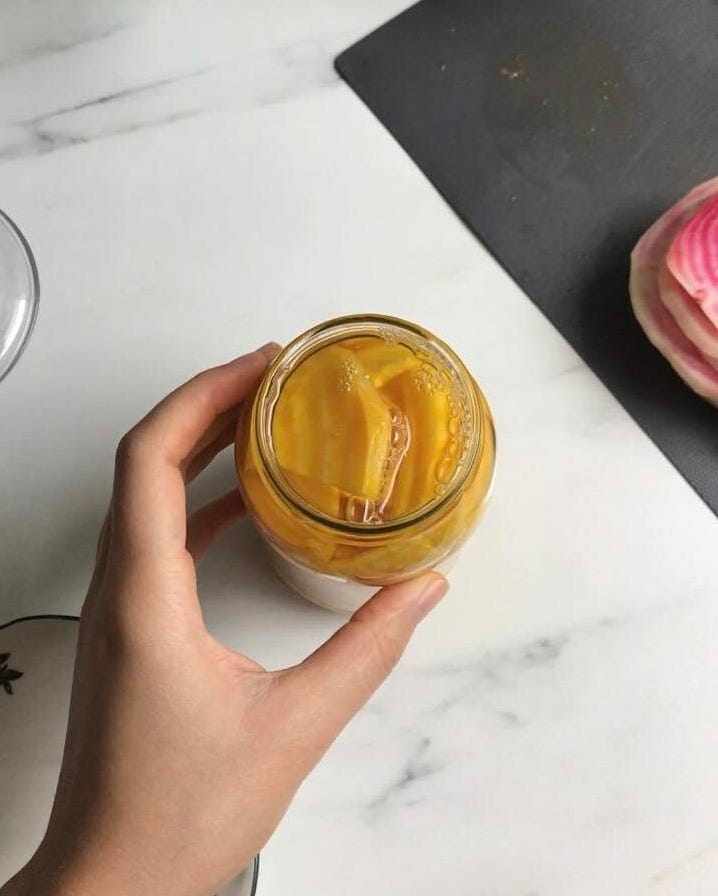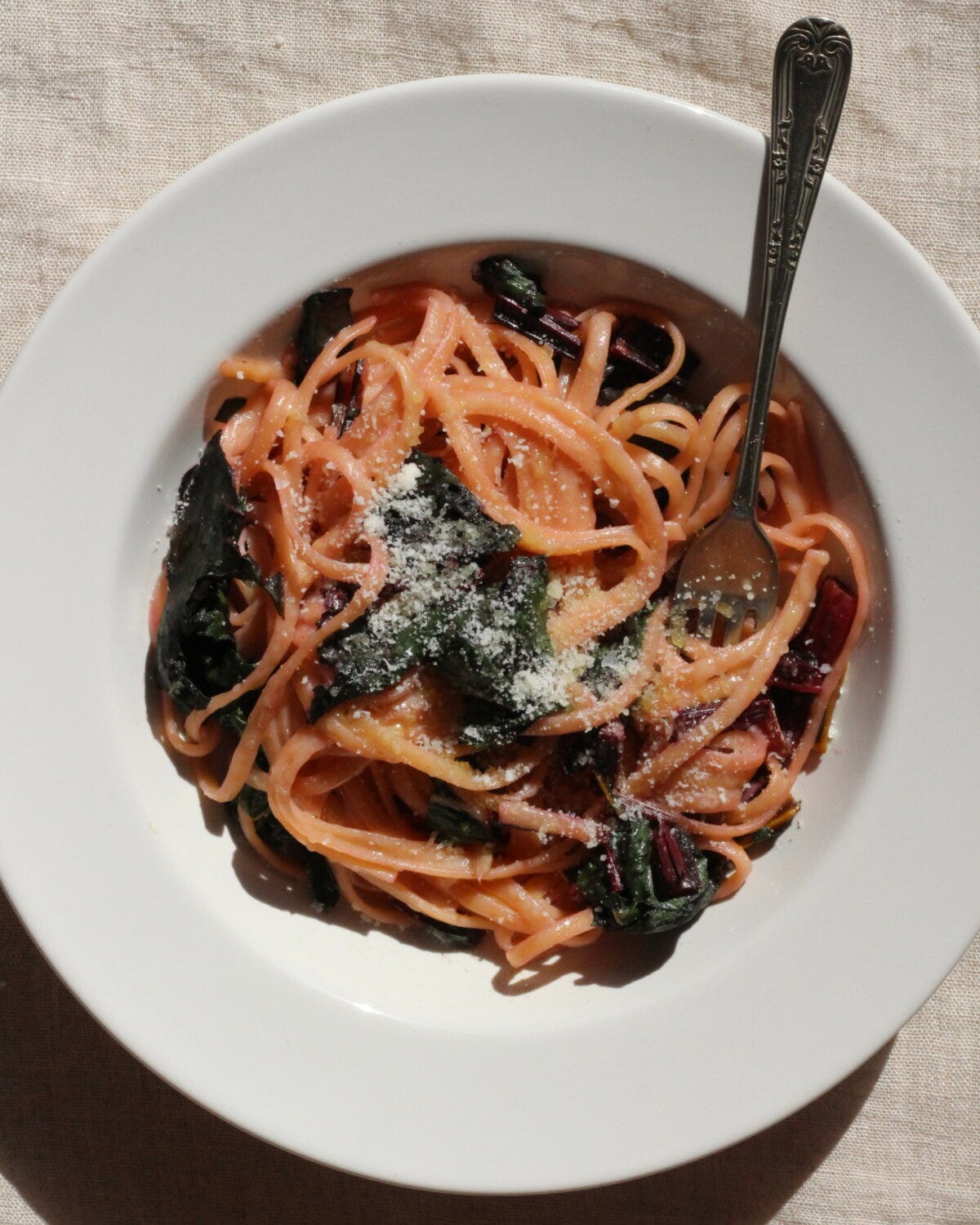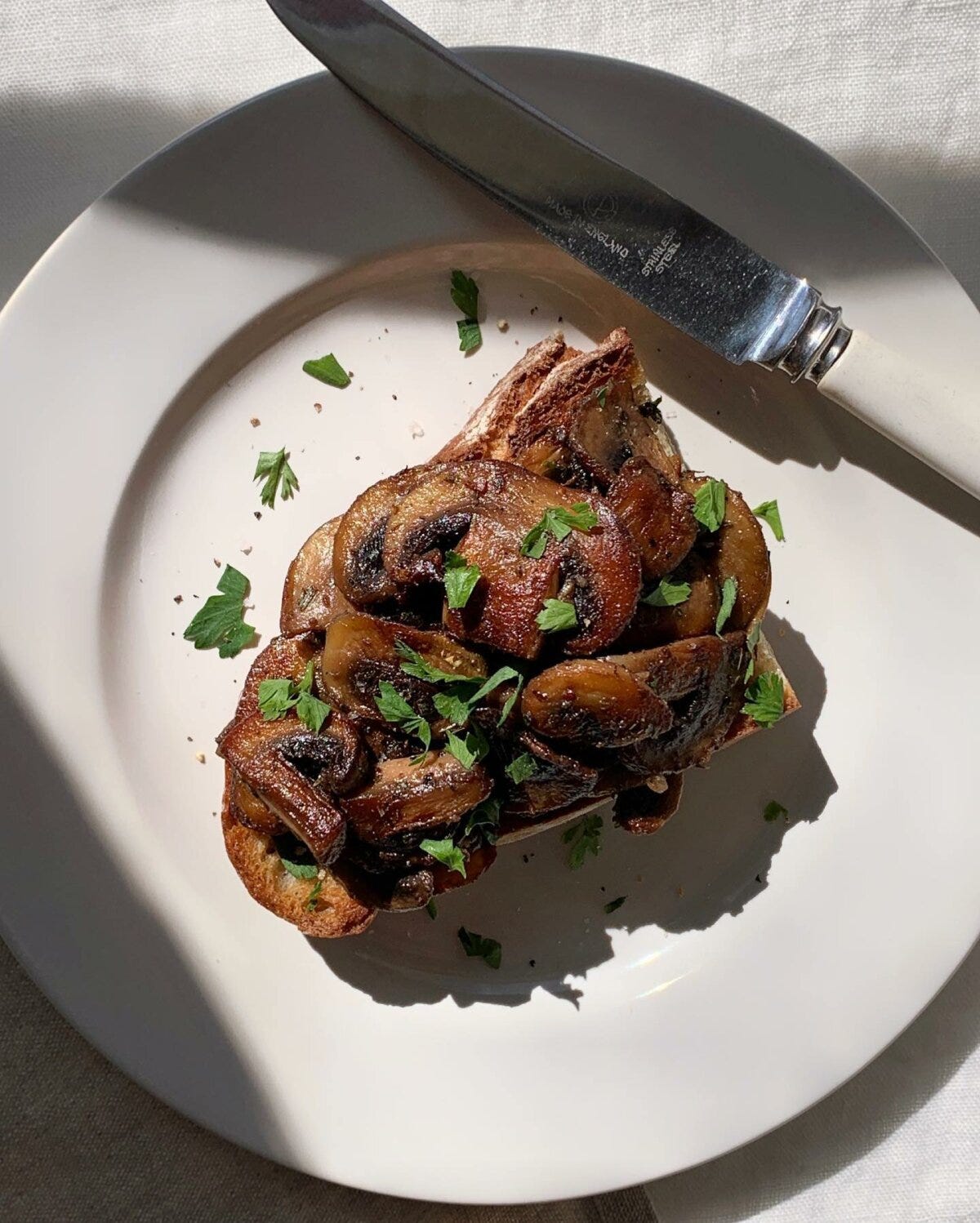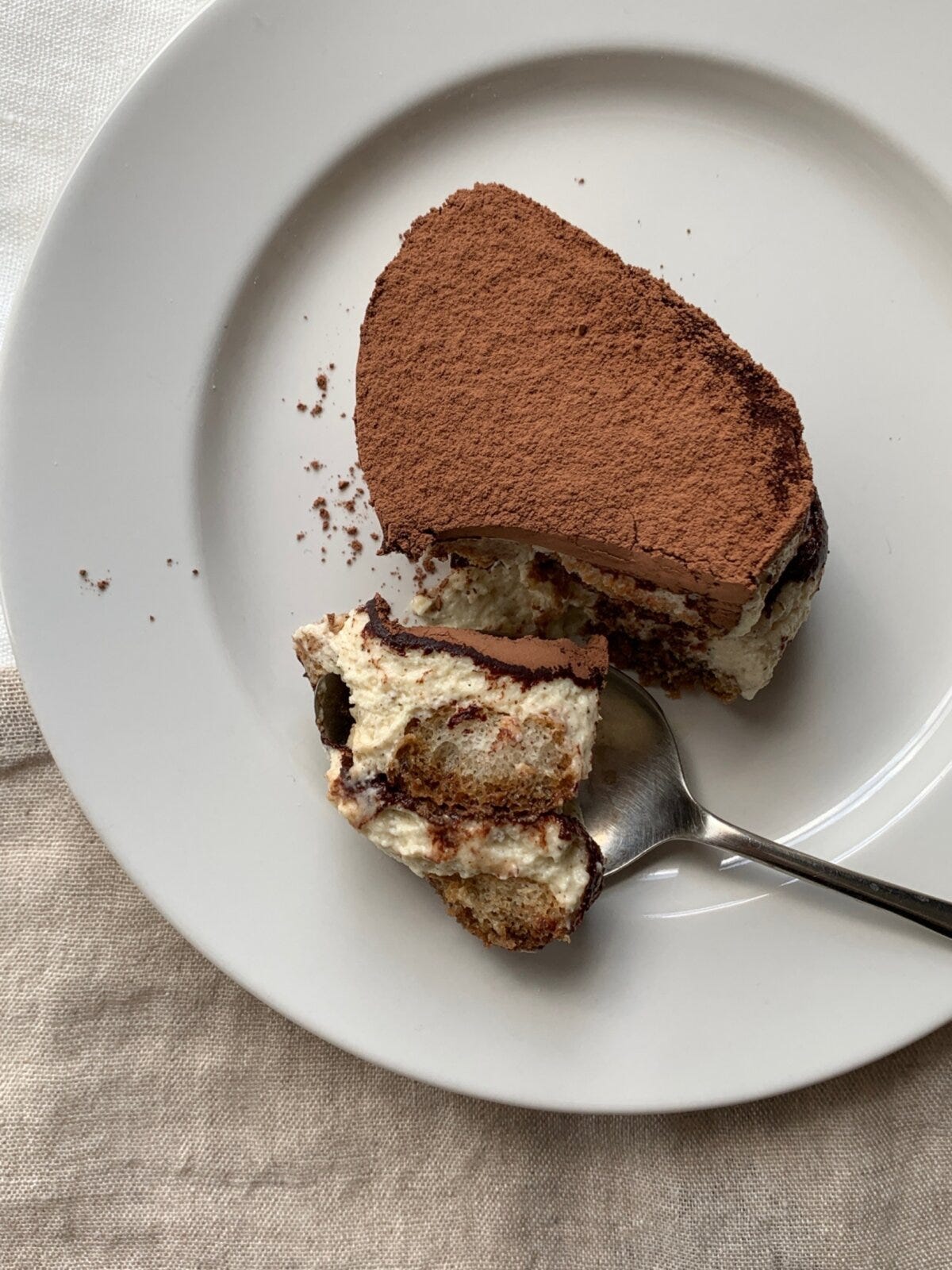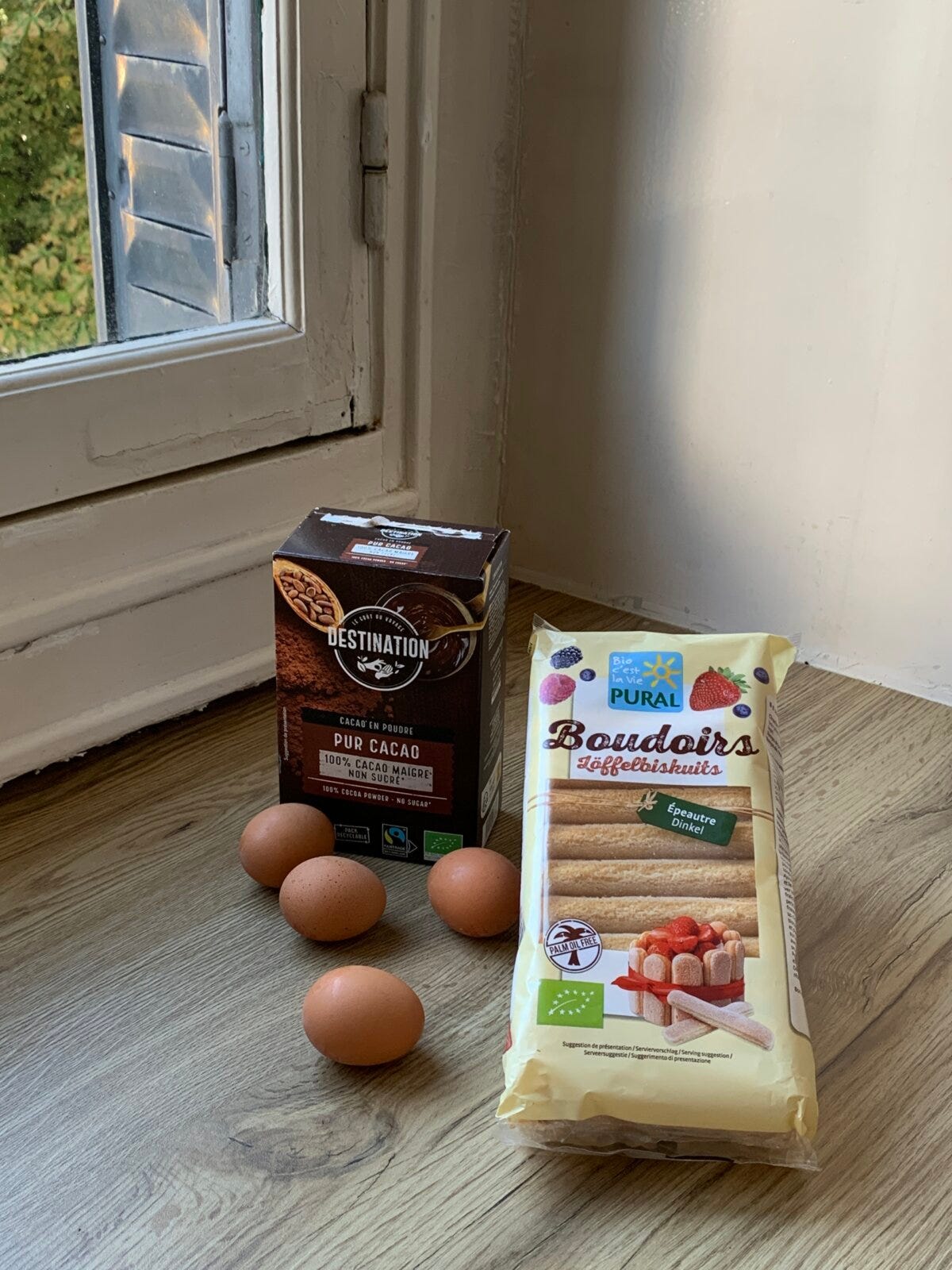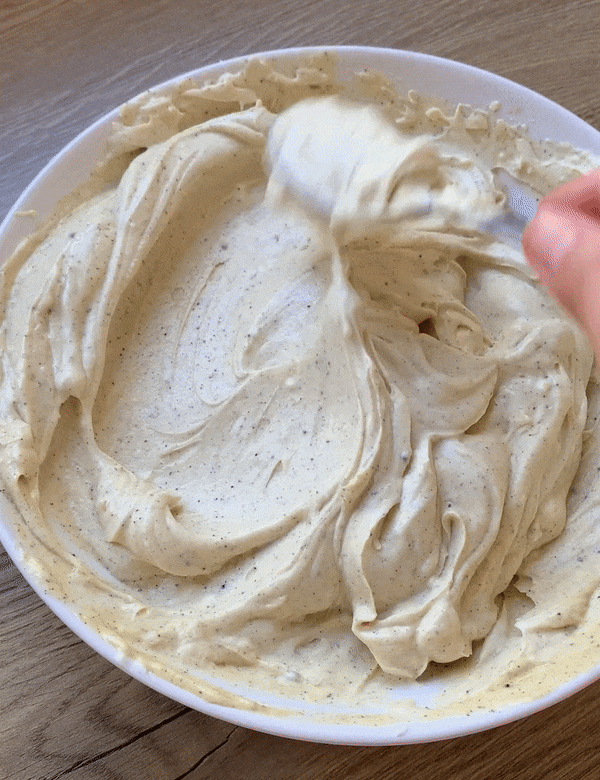Two-Day Tiramisù
little things to brighten the days + making time for what matters
Allô! 👋
I moved from France to Philadelphia this month, but that news feels somewhat insignificant in the face of ongoing world events. The human right to food, food that is sufficient, accessible, and nutritious, is one that I care passionately about. But without peace, there is no food.
Rising food costs, climate change, political instability, humanitarian crises, environmental scarcity, public health emergencies, human and international insecurity, conflicts, war — all these and more threaten peace. And although both are recognised as human rights, neither food nor peace are guaranteed. These rights, as with all human rights, need to be preserved and protected, never taken for granted. Most importantly, we must never forget that for human rights to be human, they need to be equal. For all.
When times are tough, at home or afar, little things have great power to make a day better. Actions, no matter how small, can be a great antidote to feelings of helplessness in the face of atrocity. Recently, I wrote down a list of seemingly small stuff that often make my days more cheerful. It was really useful to see them all written down, and to realise that I had the power to brighten my everyday, even just a little bit, with actions as small as getting a bit of fresh air and daylight first thing in the morning (sometimes that looks like a walk, sometimes it's just sticking my nose out the window), pausing my work briefly to sing/dance shamelessly and full-heartedly to a favourite song, or simply setting aside a moment to think of someone or something I'm grateful for. It truly is a wonderful exercise. I highly recommend it.
In times like these, it's not uncommon to be reminded of what matters most. Make a list, if it helps. Then make time for what matters most, if you can.
In this month's newsletter, you'll find four ideas for autumnal kitchen activities, a new recipe for a delicious and nutritious chard pasta, plus some additional recipes and inspiration from Instagram and the site, as well as a much-requested recipe for tiramisù (that I think is) worth gathering a crowd for.
As always, I hope you'll enjoy.
Sending you peace, love, and light,
👋simone
four autumnal kitchen activities
(one from the archives)
🍎
As I haven't had much time to spend in the kitchen this month, I thought I'd return to this snippet I had originally shared in the October 2021 newsletter, when I was living in Norway. I've edited it slightly for clarity. Reading it again now, two years later, makes me feel nostalgic and excited for more kitchen pottering all at once.
Lately, I've been trying my hand at making food and drinks that I could easily buy ready-made in a store, but that seem kind of fun to make at home (and that people often say taste better — and cost less — when made from scratch).
Though I'm far from being an expert on any of these things, they've been fun to experiment with (and to taste, mostly to taste) so I figured that showing you my attempts at different kinds of food processing and preserving might give you the itch to try it too (though do feel free to search the internet to find more experienced people's advice as an additional reference, I promise I won't be offended).
•••
one: making hot apple cider
Turns out all you have to do to make mulled cider is put some apples (and optionally other fruit) in a pot with spices, cover with water, and leave to simmer away.
To make my cider, I started with some apples, pears and rose hips that I foraged around my home. I cored and quartered the apples and pears, then halved the rose hips to scrape out their spiky / fuzzy inner seeds (be especially careful with these if picking before the first frost!). Everything went into a big pot with some mulling spices — cloves, cinnamon, star anise and orange peel — which I then covered by around 5 cm / 2 in. with cool water. Brought it all to a strong simmer, then covered the pot with a lid and lowered the heat. I left everything to gently simmer on low heat for around an hour, then mashed the cooked fruit before letting the cider simmer for an another hour (uncovered this time). Strained everything through a fine sieve so as to only retain the lovely juices, and I was all set with my hot mulled apple, pear and rosehip cider! For more detailed instructions, you may want to check out this recipe and this recipe (they sure helped me!).
•••
two: making dehydrated apple rings
This one is also quite straightforward. Take some apples, slice them thinly* and evenly across their width (peeling and coring optional), then place on a lined baking sheet and leave to dehydrate in an oven preheated to 100°C / 210°F for four or more hours — or until they've shrunken, have lost a lot of moisture, and are as tender or as crisp as you desire. Easy peasy!
*the thinner (i.e. 2-3mm or ⅛ in), the crispier; the thicker (i.e. 4-5mm or ¼ in), the chewier — use a mandolin for even cuts!
•••
three: making olive oil confits
I shared a tomato confit I made in this post and in this story but, in doing so, I may not have conveyed just how much you need to make a confit (by the way, the picture below is a bell pepper and onion confit and my oh my was that also incredible and worth making again and again).
Here's how you make 'em: set your oven to 150°C / 300°F. Add your favourite herbs and aromatics to the bottom of a baking dish**. Top with whatever produce you'd like to confit — just make sure to clean, peel, slice, and prepare them however you'd like to consume them first. Season with salt, then cover with enough olive oil to submerge at least the bottom third (more like the bottom half) of what you are confiting. Place in the oven for 2.5-3 hours. Enjoy immediately, or transfer to a jar or other container and store tightly sealed in the fridge for up to a week. Use whole, chopped up, or blended as an instant pasta sauce, a toast topping, a dressing for sturdy salads, or as a condiment for hearty dishes.
**for the tomato one mentioned above, I used a few cloves of garlic, fresh thyme, dried oregano and chili flakes; for the peppers and onions one in the photo, I simply used a bay leaf, white wine vinegar, and smoked chipotle.
•••
four: lacto-fermenting vegetables
In other words, making pickles! Not the vinegar and sugar kind, but the salty, briny kind that relies on good bacteria to break down and preserve your veg. If you're as inexperienced about this as I am, you may want to watch this video, this video, or this video to get a better idea.
The basic idea here is that you take a clean jar (an additional spritz of vinegar plus a hot water rinse, followed by an air-dry, should help reassure you that it's über-clean), place it on a scale and tare the weight, then pack it with whatever you want to pickle + spices and/or aromatics. Cover with water, then use the weight of the jar's contents to calculate how much salt you need for a safe fermentation (I used the following equation: contents' weight (g) x 0.025 = weight of salt needed in grams). Then, pour the water out into a separate vessel so as to fully dissolve the salt into it. Transfer the newly-made salt brine back into the jar, place a weight on top to keep the things you're pickling well-submerged (oxygen is our enemy here), cover with a lid and you're done! All that's left to do is leave the jar in a dark place and release CO₂ from it daily until you're happy with the fizz and flavour. Refrigerate for future enjoyment for up to 6 months.
recipes from the site
+ ideas from instagram
✨
chard (and beet green) pasta
Linguine with nutmeg, pepper, and parmesan — a simple but delicious way to enjoy chard, beet greens, kale, collard greens... or any sturdy leaf with a hardy stem, really.
roasted squash chili ginger garlic soup
This roasted squash soup is ideal for those days when you need a quick homemade pick-me-up (and chicken noodle soup just won't do the trick).
mushrooms on toast
Brown some mushrooms in sizzling butter, add minced garlic, tarragon, and thyme, then deglaze with a splash of red wine before simmering briefly in a dollop or two of mascarpone. Serve on toasted bread, garnish with black pepper and fresh parsley, and enjoy as is or with a fried egg on top. Words cannot express how much joy one gets from each new bite.
pasta, pie, and lots of vegetables, oh my
In case you missed it, here are some things I cooked last month — mostly pasta (I was busy clearing out the kitchen cupboards before the move), but also lots of seasonal veg (and fruit!).
two-day tiramisù
☕
As each passing autumn day gets shorter and shorter, the appeal of caffeine, sugar, and anything else capable of providing a quick boost feels ever-growing.
Spending time in nature, making sure you're drinking enough water, making time to rest and recharge (alone and with others), getting enough physical activity, and going to bed at a consistent time every night are all healthy aims worthy of pursuit — still, sometimes, all you want is a bite or ten of something sweet.
Not only will making this tiramisù help you tick all sorts of boxes in the self-care department (baking can be a very relaxing activity, quite physical too, and is ultimately a great way to share and show care), it is also a great exercise in delayed gratification. Assembled two days before consuming, this dessert is well worth the wait — as well as a sweet excuse to gather a friendly crowd.
•••
TWO-DAY TIRAMISÙ
for a 15x20cm baking dish, approx. 10cm tall
serves 8-12, depending on serving size
INGREDIENTS
• ~250ml espresso*
• 4 medium-sized eggs
• 100g raw or granulated sugar
• 2 heaped tsp ground/powdered vanilla or the seeds of ½ vanilla pod, or 1Tbsp vanilla extract, or 1 Tbsp vanilla sugar (if using vanilla sugar, add 1 Tbsp less of sugar in with the egg yolks)
• 500g mascarpone
• ~20 savoiardi (lady fingers)
• unsweetened cocoa powder
*I chose to use decaf, as this was going to be an evening dessert
note: as this recipe contains very few ingredients, I'd recommend using the best quality you can for the best result!
METHOD
1. Place a deep dish or shallow bowl in the freezer. Brew the coffee, pour it into the chilled bowl, then leave it to cool in the refrigerator.
2. Crack the eggs one by one and separate the yolks from the whites, placing the former in a large bowl, and the latter in another.
3. Using a whisk, beat the egg yolks. Continue to beat them as you add in the sugar, and do not stop until the mixture has thickened into a smooth, pale, fluffy (and somewhat sticky) consistency.

Whisk in the vanilla at the end, just enough so that the mixture is homogeneously speckled with vanilla seeds or, if using extract, enough so that the vanilla is evenly blended through and no streaks can be seen.
4. Using another whisk (or the first one, cleaned), whip the egg whites until stiff peaks form — you should be able to turn the bowl fully upside down without the eggs sliding out.
5. Remove the mascarpone from the fridge, then soften it a bit by pressing into it with the back of a spoon.
Add the softened cheese, one spoonful at a time, to the whipped egg yolks and sugar, stirring well in between each addition. Continue to combine until homogeneous.
6. Whisk one spoonful of egg whites very well into the mascarpone mixture, then switch to using a silicone spatula.
Gently fold in the rest of the egg whites, one spoonful at a time, taking care to incorporate them well, all while doing your best not to knock out any air from them. The result should be smooth and creamy, light and airy.
7. Gather your bowl of cooled coffee and the baking dish you will use to assemble the tiramisú. Dip the ladyfingers very briefly into the cooled coffee, one at a time, for about 1 second per side.
Arrange them evenly in a single layer across the bottom of the baking dish, breaking any lady fingers that are too long in half if necessary.
8. Using the silicone spatula, dollop around half of the mascarpone cream into mounds over the top of the lady fingers, then spread it well from edge to edge of the baking dish in a smooth, even layer.

If you like, you can now dust some cocoa powder over the mascarpone cream to cover it well — to do this, pour some cocoa powder into a sieve or other fine-meshed strainer, then tap the strainer against your hand to let the powder fall through the mesh in a light, even layer (though do note that adding cocoa powder to the middle layer is not conventional, so you do you!).
9. Repeat the steps above in a second layer: soak the ladyfingers in coffee, layer them evenly across the baking dish, spread out the rest of the mascarpone cream over top, then dust the cream evenly with as much cocoa powder as you’d like.

10. Leave the tiramisù to set in the fridge for at least 6 hours, preferably overnight, ideally for a full 48 hours. If leaving the dessert in the fridge for longer than a day, after the first 24 hours, make sure to cover the top of the baking dish.
After 48 hours, you can also freeze the tiramisù, tightly wrapped, for up to 3 months. When ready to enjoy, leave to thaw in the fridge for at least 12 hours before serving.
Remove from the fridge when ready to enjoy (I recommend bringing the entire dish out to present your lovely hard work to your tableful of guests!) and use a large serving spoon or spatula to dish out portions onto small plates. Make them as big or as small as you and your fellow diners desire, and dig in!
last, but not least:
the public health corner
a few parting links, as food for thought 🔗
📺 ONE VIDEO
Ultra Processed Food: What Are We Eating? (Tonight / ITV1)
unfortunately only accessible in the UK, but the link above leads to a short article about the episode!
🗒️ ONE ARTICLE
US nutrition panel’s ties to top food giants revealed in new report (The Guardian)
🎧 ONE PODCAST EPISODE
Prescribing Fruit and Veg — A New Model for the NHS? (The Food Programme)
📘 ONE BOOK
Food Politics: How the Food Industry Influences Nutrition and Health, Marion Nestle (University of California Press)
P.S. I always have a hard time just picking one of each so, in case you're interested, there's plenty more where that came from!
That's all from me this time! See you again very soon 💛
This was a Substack edit of an archived newsletter. To read the newsletter in its original format, click here.





